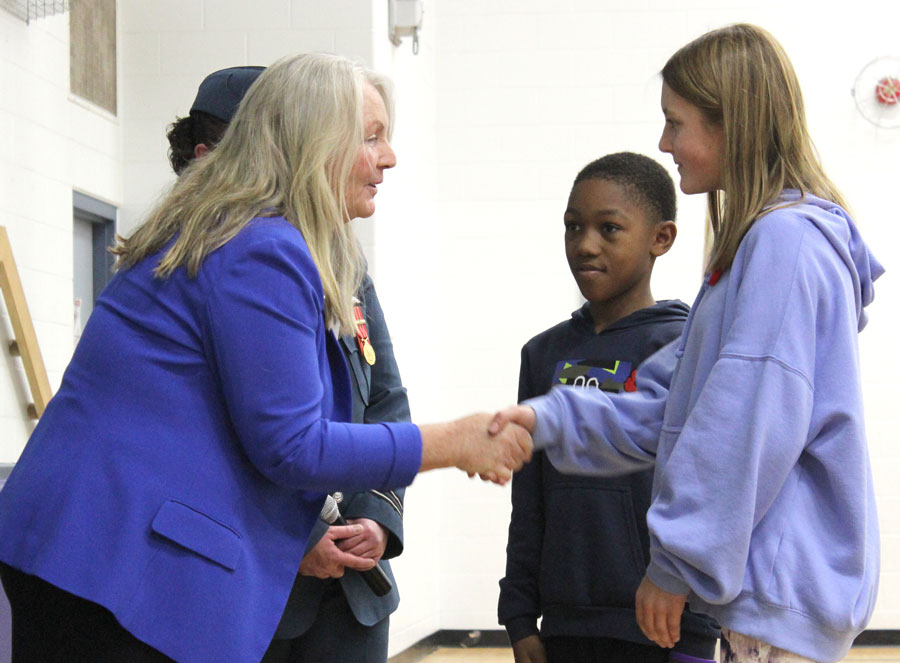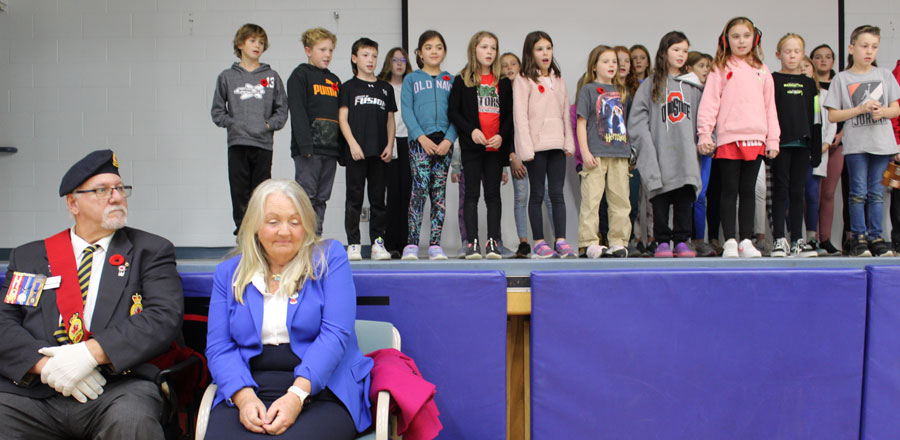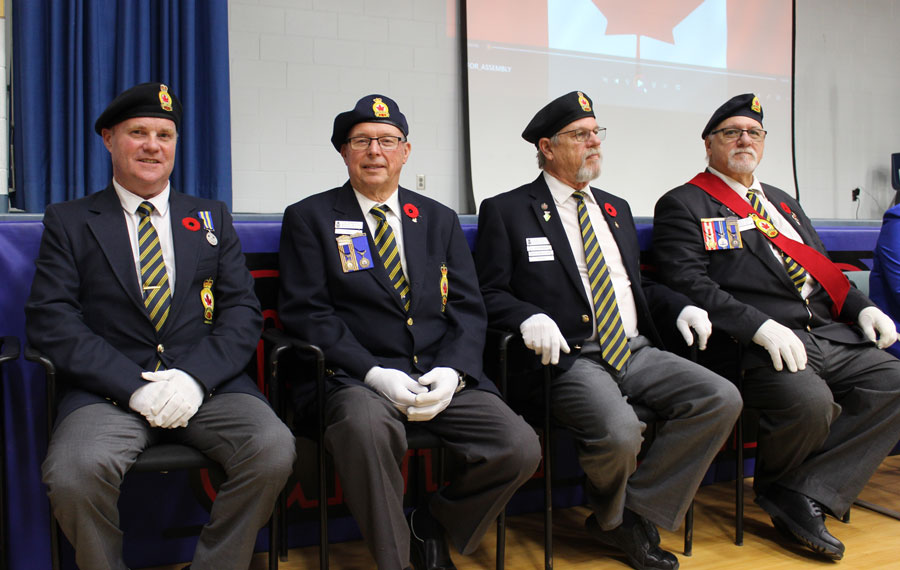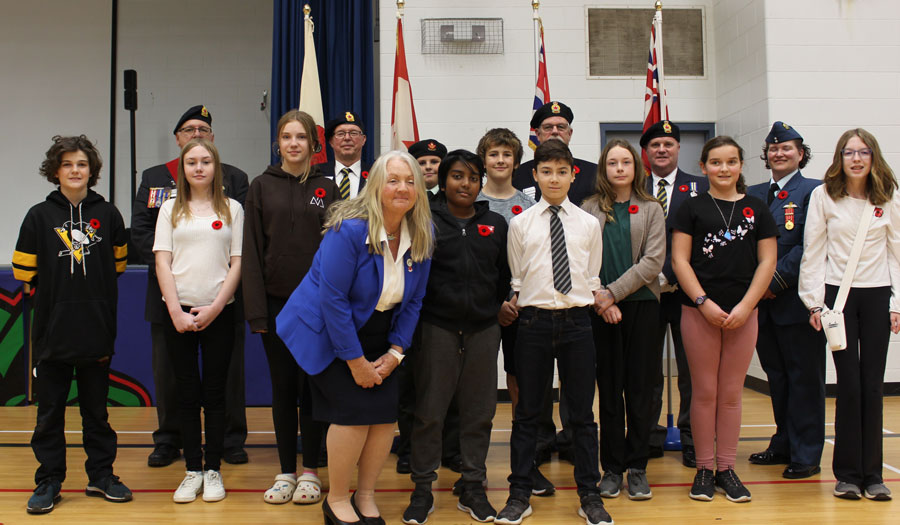FERGUS – Students across the Wellington Catholic and Upper Grand District school boards pinned bright poppies over their hearts and listened to lessons of war on Nov. 10.
St. Joseph Catholic School in Fergus welcomed veterans into its bright gymnasium for a Remembrance Day ceremony organized by French teacher and air cadet captain Pam Pegelo.
Attending veterans included Dave Evans, Conrad Sawyer, Bob Fisher, Marie Sterling and Tom Semanyk.
Sterling told students about her experience as an intelligence Master Corporal in the Canadian Armed Forces.

She came from a family with a strong history of military service, including spies in the Second World War, and felt she was always expected to join the armed forces.
So Sterling signed up at the young age of 17, as soon as she graduated high school.
“I learned how to fight, fire weapons, throw grenades, and protect myself,” Sterling said. She also learned about intelligence gathering – a skill for which she found she had a knack.
She worked for the NATO alliance, which “protects certain countries against other countries,” Sterling explained to the crowd of attentive students.
“Basically, I went after the Russians. I was part of the task force that tracked the Russians and what they were doing.”
Russia was considered an enemy then, Sterling said, and “some still consider them enemies now.”
Sterling said her team’s primary focus was preparing for a nuclear attack.
“There are a lot of nuclear weapons being aimed at the United States right now,” she said solemnly, noting most of them are in silos, or underground missile launch facilities.
“We need people to monitor it, so the bad guys don’t go crazy on us,” she said.
Sterling shared a slideshow with educational videos and music, highlighting women in war and the Royal Canadian Air Force’s search and rescue teams.
She also shared photos of her former workplace, the Diefenbunker (previously Canadian Forces Station Carp), “one of Canada’s most secretive places to work.”
Sterling said she “lived, worked, slept and showered underground for a very long time” within the four-storey underground bunker designed to survive a nuclear attack.
When Sterling invited questions from the audience many eager hands shot into the air, particularly from younger students.

They asked thoughtful questions including:
– who started the Second World War?
– how did the First World War begin?
– does Canada have a very strong army?
– are the nuclear weapons hidden in farm silos?
– what was your favourite part of your service?
– did you throw grenades at people?
– have you fired an AK-47?
– how much damage can a nuclear bomb do?
For the cause of the Second World War, Sterling bounced the question back to the students and dozens raised their hands, keen to demonstrate their historical knowledge.
Regarding Canada’s army, Sterling said no, it is not a very strong one.
“We are very well trained,” she assured, “but we do not have a lot of numbers in the military.”
She said the Canadian military has earned international respect for its well-trained soldiers who are willing to die for their country.
Sterling said her favourite part of her service was the wonderful, dedicated and amazing people she met along the way, many of whom became her close friends.
Regarding the weapons she’s fired, Sterling chuckled and said, “If I told you I’d have to kill you.”
Eventually question-time needed to be cut off as it seemed the inquisitive kids had endless queries for the visiting veteran.
The ceremony concluded with the Last Post, a moment of silence, students reciting the Act of Remembrance, and the student flag party marching of the flags.





